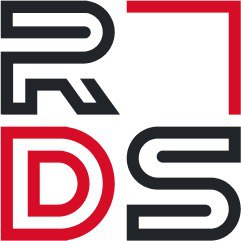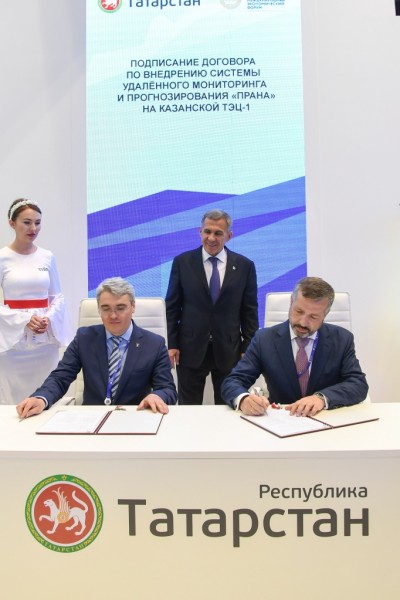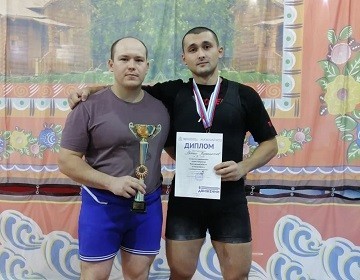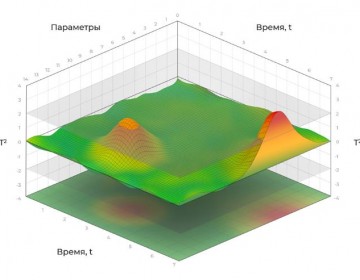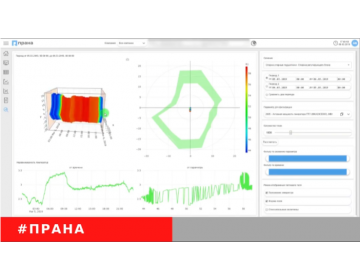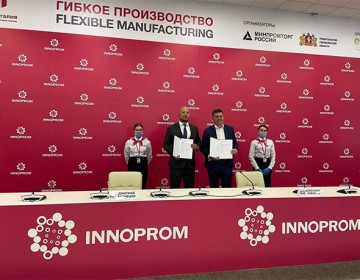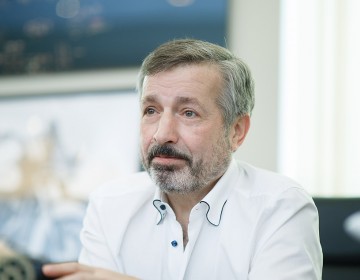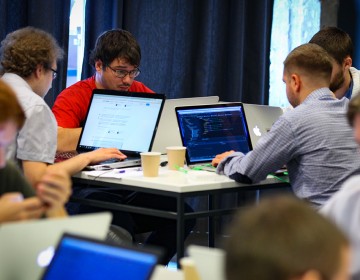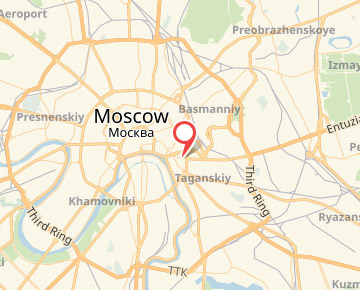PRANA prognostics system will ensure the reliability of power-generating units at Kazan CHPP-1
The St. Petersburg International Economic Forum saw the conclusion of a contract for the connection of Kazan CHPP-1 to PRANA system for prognostics of the condition of the power-generating equipment. In the presence of the President of Tatarstan Rustam Minnikhanov, it was signed by the First Deputy General Director of Tatenergo Airat Sabirzanov and the Chairman of the Board of Directors of ROTEC Mikhail Lifshitz.
The main power-generating equipment in the power-generating units under construction at Kazan CHPP-1 will be hooked up to PRANA: two PG6111FA turbines made by General Electric, two Т-40/50-8,8 steam turbines made by the Ural Turbine Works, and two heat recovery steam generators made by EMAlliance plus three booster compressors for power-generating units, made by ATLAS Copco.
Predictive algorithms inherent in PRANA system and a wealth of experience accumulated by experts at the ROTEC's Prognostics Center allow for troubleshooting incipient glitches well before they can escalate into an emergency. Tatenergo will have an impartial tool for evaluating the repairs and maintenance quality. The system also dramatically simplifies the analysis of equipment start-up and shutdown.
Skilled professionals at the ROTEC's Prognostics Center will be providing a round-the-clock monitoring, consultancy support and emergency notification and response in an emergency situation. Every month the staff at Kazan CHPP-1 will receive reports on the quality of equipment operation containing recommendations for its maintenance and repairs.
Aided by the PRANA system mobile app, the energy company management will have the opportunity to remotely control the operation of costly equipment in the online mode.
The PRANA Predictive Analytics and Remote Monitoring System has received another update of the operating system.
The industrial holding ROTEC JSC and Group-IB, one of the leading developers of solutions for detecting and preventing cyberattacks have entered into a cooperation agreement to ensure technological and cybersecurity of critical infrastructure facilities. The agreement was signed at the International Industrial Trade Fair Innoprom 2021 and will allow ACS and IS specialists of enterprises to observe and take proactive measures to prevent incidents caused both by service wear of equipment and as a result of cyberattacks.
The industrial Internet begins with the introduction of systems based on mutual penetration of information technologies and automation devices of manufacturing equipment, such as the systems of remote monitoring and diagnostics. One of the inspection methods of the equipment’s condition is its continuous monitoring, which is a necessary condition for the transition to a service system on the operating condition
According to Mikhail Lifshitz, Chairman of the Board of Directors of ROTEC, Russian power engineering company, the venture capital market in its present state is currently raising people whose aim is not to create a winning product, but just to raise funds. With regard to his business, Mr. Lifshitz abandoned the speculative component and headed for the long-term integration of ideas into production.
Despite the hazy weather and pouring rain, the yachtsmen were in a terrific mood! Three crews of racing yachts in Olympic Class SB20, mainly represented by employees of ROTEC, PRANA and TEEMP, took the whole winners podium in the amateur competition. For most of the participants, it was their first-ever experience of this kind – and they claimed victory straight away!
The trend towards digitalization and flourishing of the service economy have led to the emergence of a new model – Maintenance-as-a-Service. Let’s explore how it’s organized and the benefits that it offers to business.
The Internet of Things (IoT) integrates devices into a computer network and allows them to collect, analyze, process and transmit data to other facilities via software, applications or technical devices

